Lessons Learned from Harvey – Managing the Circle of Care
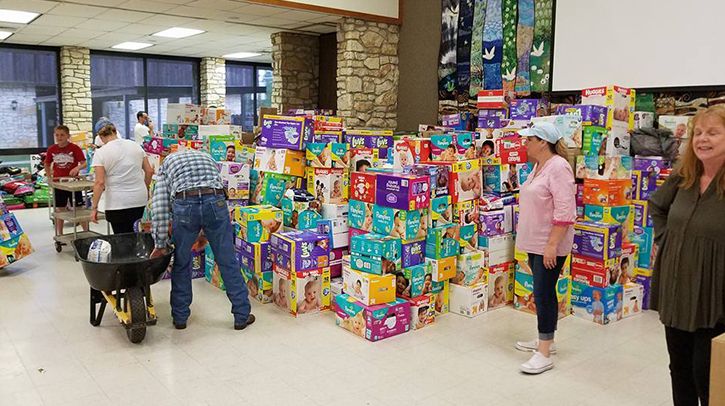
Carol E. Barnwell was the Director for Communications for the Episcopal Diocese of Texas during Hurricane Harvey. In this blog, she offers up some tips for other communities of faith facing similar situations. This blog was originally shared with clergy and lay-people in the US Disaster newsletter, Lamplight. So while the tips may not apply to all, it offers an interesting glimpse into the important role of faith, especially in Episcopal communities, before, during and after disaster.
A year after Greater Houston and Southeast Texas took on more than 50 inches of rain during Harvey’s historic flooding, our brothers and sisters on the East coast face similar hardships as a result of Hurricane Florence.
Though we cannot plan for, or prevent every possible outcome, we can take precautions that minimize the impact of a disaster on our diocese and congregations. This level of preparedness will better position us to serve our community in the midst of a traumatic event.
Leading up to Harvey’s landfall, the Diocese of Texas encouraged all of our parishes to create a written emergency plan and had a dedicated disaster response team in place. But beyond written planning, it was our deep connection to the community that presented the best gifts that the Church had to offer. Every congregation was encouraged to create worship opportunities outside of the walls of their church. These connections strengthened our posture as a diocese to be close with our neighbors. Once the disaster struck, we were a trusted resource for even the most vulnerable communities.
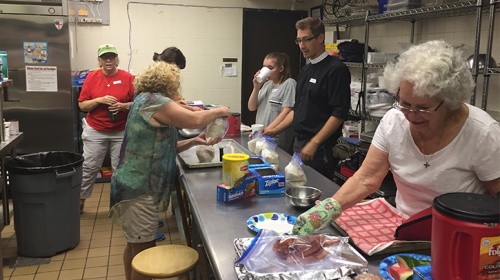
The following tips can support faith communities as you move through this disaster:
Care for self and family
The first thing to remember is to take care of yourself and your family. We often say, “Put on your own gas mask so that you can assist others.” Make sure you eat all of your meals, take breaks, drink water, sleep in a safe place and continue your prayer life. These may seem obvious, but in the midst of trauma, we can forget to take care of our basic daily needs and focus on helping others. But if you are not well, you cannot effectively do what God is calling us to do: love and serve our neighbors.
Care for Clergy, staff and congregations
-
Maintain intentional prayer opportunities with and for each other. Always remember, prayer is an action, it provides spiritual strength that is much needed as you recover from the disaster.
- During the storms, we were fortunate in that many of our communities that were sheltered in places that still had power and internet. Each day, we connected using social media and prayed. This provided a virtual space for connection and community.
- We used AlertMedia as a pilot diocese for Episcopal Relief & Development and found it to be an excellent tool to check on staff, clergy and churches. It helped us identify damaged churches and identify where help was most needed in the immediate aftermath of the flooding. While this is a great tool, it does not replace a daily call for checking in (both with staff only and with a wider group of impacted/affected people).
-
Build a contact list of clergy, church, school and institution leaders, via cell phones, landlines, email and social media.
Care for Building/Facilities
-
Once it is safe to navigate through the community, be sure to check on buildings and property so that you can report damage to insurance and the diocese. If your property is safe, think of ways to open the doors and allow space for the community.
- Make a list of who to contact and share this information with congregations. This list should include: Church Insurance, diocesan officials, local county officials, FEMA, approved vendors list for repairs. Include a main number of a diocesan staff member to call for questions
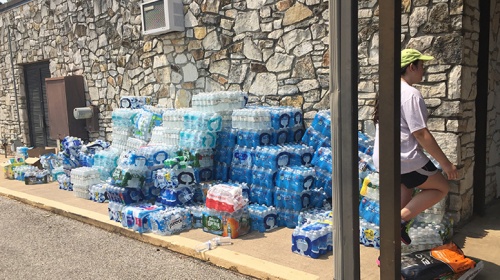
Care for Congregation and Ministries
-
Worship is a cornerstone for many communities after a disaster. If it is safe to gather the Sunday after the disaster, make sure you do! Even if it is outside of your damaged church. If it is not safe to travel—make sure that congregants know that church is cancelled and offer options for worshipping online.
-
Create ways to check in on members, especially those who may need extra support or may not have a network of support beyond their church family. This includes, but is not exclusive to, elderly, those who are new to the area, medically dependent, undocumented and mixed status families.
-
If your community has been evacuated, be sure to know where folks have traveled. In the short term, there may be support networks in those areas that can help them even if they are far from home.
-
As soon as it is possible, remember to engage your ministry efforts, i.e. feeding/pantry programs, elder and child care programs, support group meetings, and other community gathering opportunities. These provide opportunities for comfort and healing, as well as, ways to access community needs.
-
Don’t forget your regular church life. While recovery efforts are necessary, they can take over from regular church activities. Continuing the regular activity that existed before the storm, when appropriate, is critical for a strong and sustained recovery.
-
Encourage everyone to watch social media channels to remain updated on needs of their fellow members and where they can help. As mentioned before, you can even lead prayer services on these social media platforms.
-
Keep up with county emergency responders on social media. Remember that Episcopal Relief & Development is not a first responder—but we may be able to share information with first responders about impacted people.
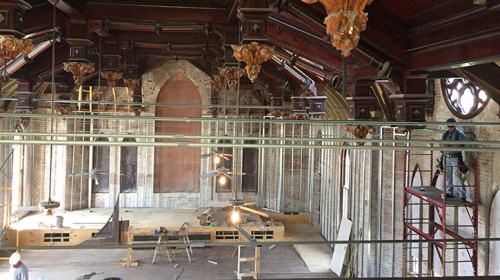
Care for community and neighbors
-
Once it is safe, take a walk around the neighborhood, assess damage and greet neighbors. You can gather a lay ministry team to go two by two, offering cold water, a gift card, prayer and a listening ear.
-
Understanding your community need is critical. Many good-hearted people will want to give your church in-kind donations during a disaster. You have permission to say “No, thank you.” Many times, donations don’t match needed goods and create more logistical problems than they help.
-
Mobilize churches that are able to set up as a distribution point, host national guards in their parking lots, provide food and shelter where possible. (The Episcopal Asset Map is a great resource for this.)
-
Make sure that the church also has backup food and water supplies.
- Managing Donations — Add a specific donation link to the homepage of your website and on social media. Have a plan in place for how to release funds. You can direct donors to Episcopal Relief & Development to provide funding for Hurricane Relief.
-
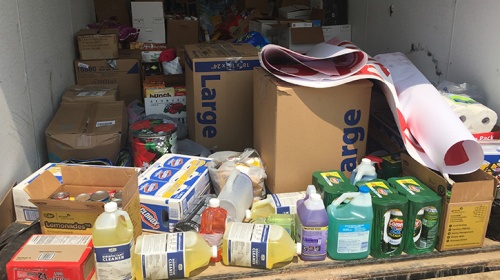
This is by no means an exhaustive list, but being prepared, even just before the storm comes, can be immeasurably helpful. Remember, this is not a sprint, it is a marathon. As people of faith, we know that there is always the loving shelter of Jesus Christ to hold us in these times of difficulty. Know that our community is praying for you and your community.
 Carol E. Barnwell is the Director for Communications for the Diocese of Texas.
Carol E. Barnwell is the Director for Communications for the Diocese of Texas.
Images: Top; Gathering supplies, Middle 1; Cooking for the community, Middle 2; Water supply, Middle 3; Repairing a damaged church, Bottom; Supplies
Donate to the Hurricane Relief Fund. Your generous support will supply critical necessities for communities immediately and for the long-term as they recover and rebuild.


